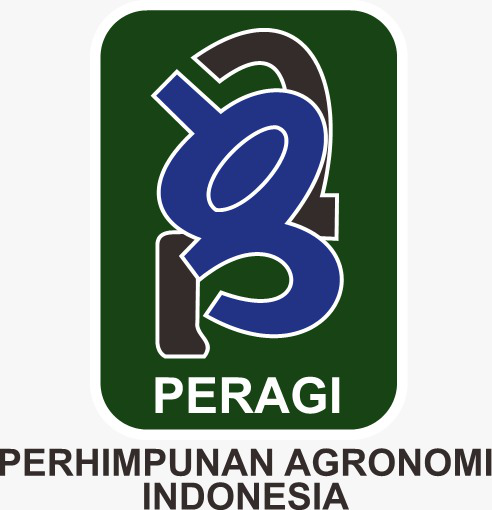The Effect of Applying Organic Skin and Coconut Dregs Compost on The Growth and Yield of Purple Eggplant Plants Fertilizer of Red Onion (Solanum melongena L.)
Abstract
Eggplant (Solanum melongena L.), a member of the Solanaceae family, is a food plant that offers various health benefits, such as its potential anti-cancer effects and its ability to impact cholesterol levels. This research aimed to investigate the impact of coconut dregs compost and liquid organic fertilizer derived from onion skin on the growth and productivity of purple eggplant plants, specifically regarding plant height, flowering duration, time to harvest, and fruit yield. The research was conducted at Pensiunea Indah Housing Road in the Bakaran Batu District, Labuhanbatu Regency, from March to May 2024. The study methodology used two components of a factorial randomized block design (RAK). Factor 1 encompasses four tiers of utilizing organic fertilizer derived from shallot skins, including a control group and applications of 100. 200. and 300 ml per individual plant. Factor 2 comprises four different levels of coconut dregs compost: a control group and 75, 150, and 225 grams per plant. The study's findings indicated that the application of coconut dregs compost and liquid organic fertilizer derived from onion skins had a notable impact on the height of the plants, the age at which they started flowering, the duration of the harvest, and the quantity of Fruit produced. The ideal method for achieving optimal results in cultivating purple eggplant plants involves the application of a liquid organic fertilizer derived from a combination of composted onion peels and coconut dregs at dosages of 300 ml and 225 g. This specific blend has been found to enhance plant height, prolong bloom and harvest times, and increase fruit yield.Downloads
References
Faisal. 2012. Meraup Untung Jutaan Rupiah dari Budidaya Terong. Diandra Primamitra Media. Jakarta.
Leo Noza A, dkk. 2014. Pengaruh Pemberian Dolomit dan Pupuk N, P, K Terhadap Petumbuhan dan Produksi Tanaman Jagung Manis (Zea mays saccharata sturt) Di Lahan Gambut. Vol 1 No 2.
Lingga, P., dan Marsono. 2013. Petunjuk Penggunaan pupuk. Penebar Swadaya. Jakarta.
MacGillivray, J. H. (2009). Vegetable production with special references to western crops. Blakiston: Cornel Unversity.
Makiyah, M. 2013. Analisis Kadar N, P, dan K Pupuk Cair Limbah Cair Tahu Dengan Penanaman Tanaman Matahari Meksiko (Tithonia diversifolia). Skripsi. Semarang: Jurusan Kimia Fakultas Matematika dan Ilmu Pengetahuan Alam Universitas Negeri Semarang.
Muldiana, S., & Rosdiana. (2017). Respon Tanaman Terong (Solanum melongena L.) Terhadap Interval Pemberian Pupuk Organik Cair Dengan Interval Waktu Yang Berbeda. Prosiding Seminar Nasional 2017 Fakultas Pertanian UMJ, 1(December 2016), 155-162.
Oktavianti, LD., dan Koesriharti. 2019. Pengaruh Pupuk Anorganik Pada Pertumbuhan dan Hasil Tanaman Kol Bunga (Barassica oleracea L.). Produksi Tanaman. 7(12): 2315-2322.
Onggo, (2001). Aplikasi Bioktivator dan Pengaruhnya Terhadap Pertumbuhan dan Hasil Berbagai Sayuran. Universitas Padjajaran. Bandung.
Rahmad, A., dan Sulhaswardi. 2013. Toleransi Tanaman Jagung (Zea mays L.) Pada Tanah Yang Diberi Sludge Pulp dan TSP. Dinamika Pertanian. 18(3): 195-202.
Rodiah, I. S. 2013. Manfaat Penggunaan Pupuk Organik Untuk Kesuburan Tanah. Jurnal Universitas Tulungagung Bonorowo. 1(1) : 30-42.
Rukmana, R. 1999. Bercocok tanam Terong. Kanisius. Yogyakarta.
Sumantri A. 2013. Kesehatan Lingkungan. Jakarta: Kencana Prenada Media Grup.
Sunarjono. 2008. Bertanam 30 jenis sayuran. Penebar Swadaya Jakarta.
Williams, C. N., Uzo, J. O., & Penegrime, W. T. (1991). Vegetable production in the tropics. London: Longman Scientific and Technical.
Winarso, S. 2005. Kesuburan Tanah: Dasar Kesehatan dan Kualitas Tanah. Gava Media. Jogjakarta. 269 hal.
Copyright (c) 2024 Ardiansyah Putra Hasibuan, Novilda Elizabeth Mustamu, Yusmaidar Sepriani, Khairul Rizal

This work is licensed under a Creative Commons Attribution 4.0 International License.
Authors who publish with Jurnal Agronomi Tanaman Tropika (JUATIKA) agree to the following terms:
Authors retain copyright and grant the Jurnal Agronomi Tanaman Tropika (JUATIKA) right of first publication with the work simultaneously licensed under a Creative Commons Attribution License (CC BY 4.0) that allows others to share (copy and redistribute the material in any medium or format) and adapt (remix, transform, and build upon the material for any purpose, even commercially) with an acknowledgment of the work's authorship and initial publication in Jurnal Agronomi Tanaman Tropika (JUATIKA).
Authors are able to enter into separate, additional contractual arrangements for the non-exclusive distribution of the journal's published version of the work (e.g., post it to an institutional repository or publish it in a book), with an acknowledgment of its initial publication in Jurnal Agronomi Tanaman Tropika (JUATIKA). Authors are permitted and encouraged to post their work online (e.g., in institutional repositories or on their website) prior to and during the submission process, as it can lead to productive exchanges, as well as earlier and greater citation of published work.







 More Information
More Information



